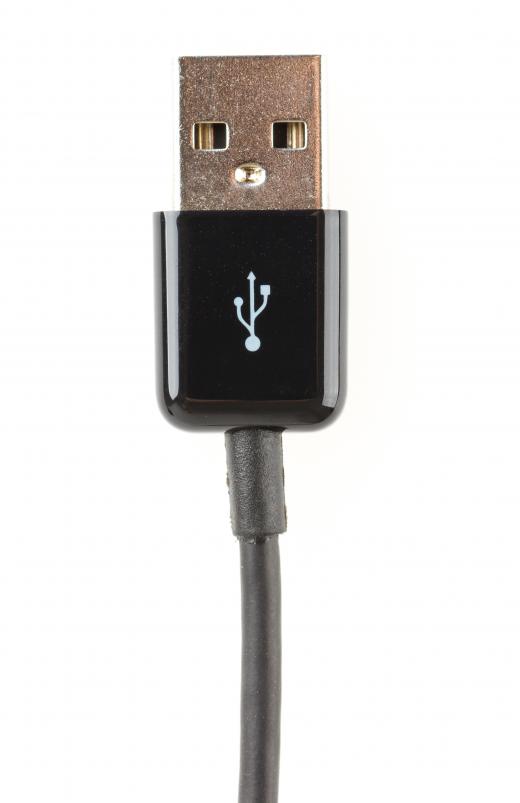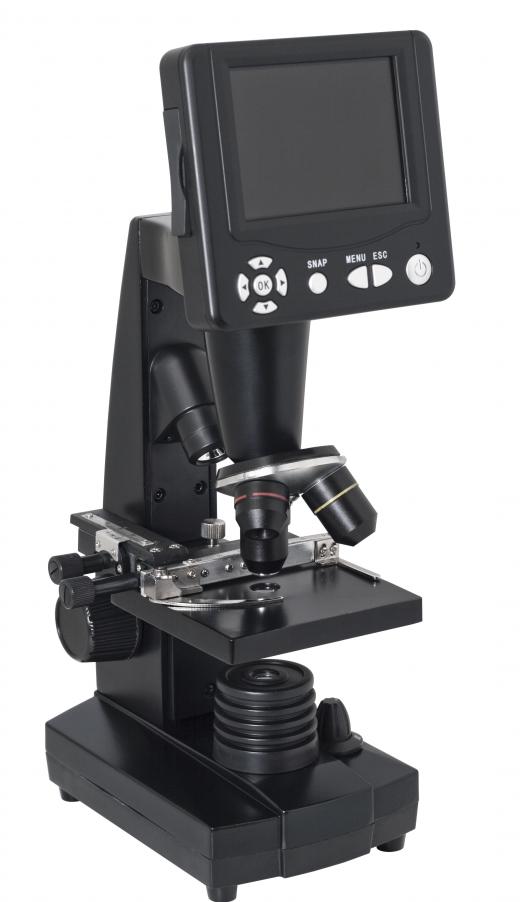What is a Computer Microscope?
A computer microscope is a microscope which either interfaces directly with a personal computer, or else is designed with a computer built-in, and some method of transferring images to a computer. The computer microscope is a relatively recent invention, growing out of scientific-grade microscopes that use computer technology. It is a very popular toy, both for adults and children, and can be used for a wide range of basic applications, although currently resolutions are not high enough to be suitable for many more complex purposes.
The first popular computer microscope was developed by Intel as part of its Intel Play line. The chip giant decided it wanted to get involved in the smart toy movement, creating toys that included on-board computers. Rather than building dolls, or another form of toy that had limited real-world applications, Intel opted to launch its line with a useful consumer-scientific product, the QX3™. The QX3™ is a fairly simple computer microscope, which can connect to a computer through the USB port. It can then take still photographs directly to the computer, or can record videos.

Intel eventually discontinued its Intel Play line, selling it to Prime Entertainment, which became the Digital Blue brand. Digital Blue produces the most popular computer microscope currently on the market, the QX5™, the successor to the earlier QX3™. The QX5™ contains a number of upgrades to the earlier QX3™, and because of its fairly low price point, has become very popular both in schools and in homes.

The QX5™ is essentially a webcam, and offers three different magnification levels: 10X, 60X, and 200X. The computer microscope is connected to a computer via a USB cable, and from the computer it can be programmed to do a wide range of tasks. It can take videos and photographs, and can be set to take time-lapse photographs at specific intervals, as well. The sensor used in this computer microscope achieves images of 640x480 pixels, making them fairly crisp, and at less than $100 US Dollars (USD), the price is low enough for most consumer needs.

Other computer microscopes are comparable both in price and resolution to the QX5™ and earlier QX3™, with some as cheap as $30 USD for microscopes with a maximum resolution of 60X. Different microscopes have different form factors, however, with some made to use like a loupe, freestanding and designed to be held, and others designed more like traditional microscopes. This is largely a matter of preference, and some of the freestanding microscopes include stands so that they can be held stationary if needed.

Higher-quality digital microscopes also exist, in the $300 USD to $600 USD price range. These microscopes are much more like traditional microscopes, but often include a digital display. They accept flash memory, which can be loaded with stationary or video slides, and can be connected to the computer via USB. These types of digital microscopes may get as high as 400X magnification, and with an additional 4X digital zoom they can easily view slides at up to 1600X their actual size.
AS FEATURED ON:
AS FEATURED ON:















Discuss this Article
Post your comments